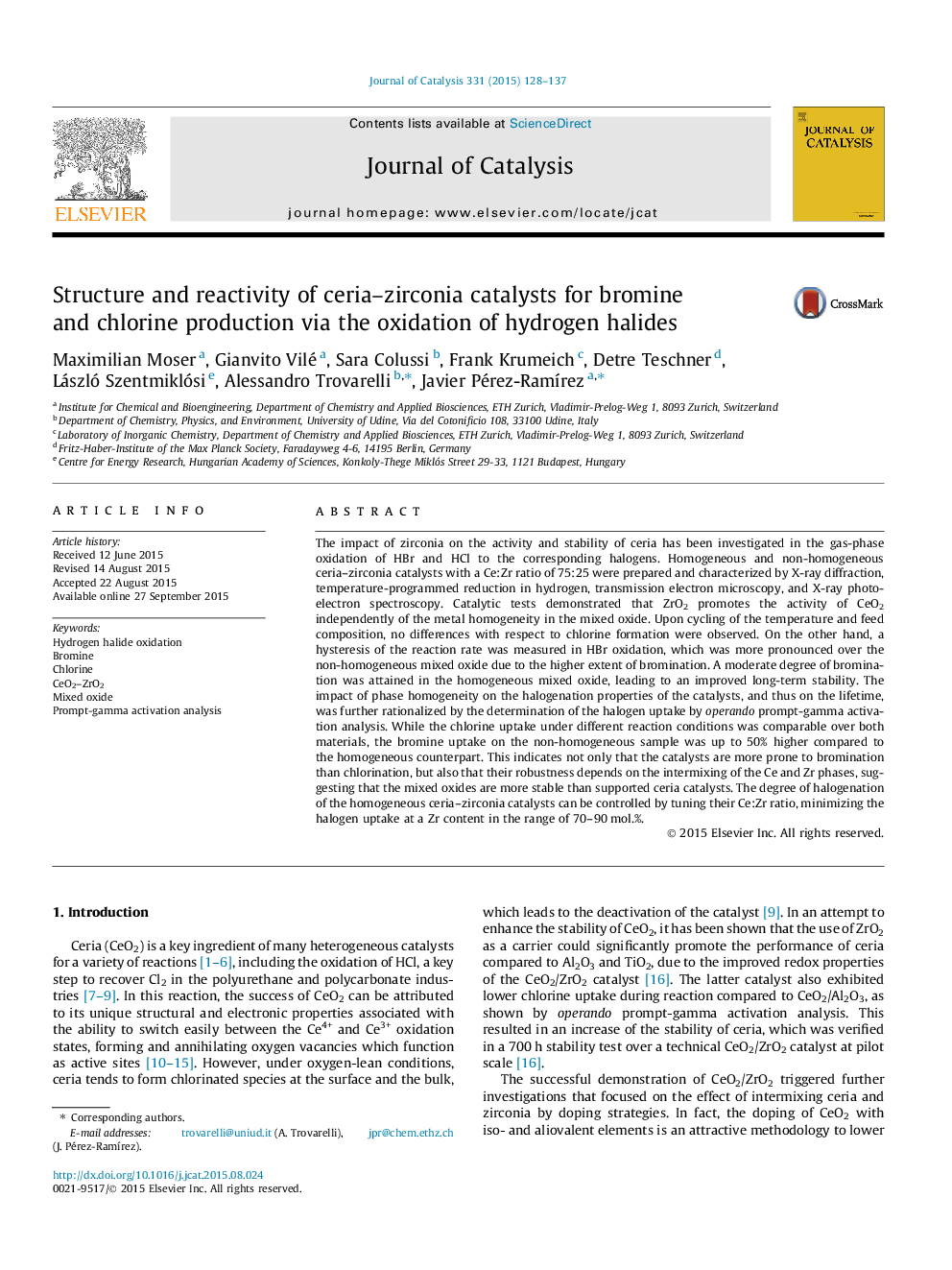| کد مقاله | کد نشریه | سال انتشار | مقاله انگلیسی | نسخه تمام متن |
|---|---|---|---|---|
| 60703 | 47543 | 2015 | 10 صفحه PDF | دانلود رایگان |
• Homogeneous and non-homogeneous ceria–zirconia catalysts have been prepared.
• Zirconia promotes the activity of ceria in HBr and HCl oxidation.
• The catalysts are more prone to bromination than chlorination.
• Homogeneous samples incorporate less bromine and are more stable in HBr oxidation.
• The degree of halogenation can be controlled by tuning the Ce:Zr ratio.
The impact of zirconia on the activity and stability of ceria has been investigated in the gas-phase oxidation of HBr and HCl to the corresponding halogens. Homogeneous and non-homogeneous ceria–zirconia catalysts with a Ce:Zr ratio of 75:25 were prepared and characterized by X-ray diffraction, temperature-programmed reduction in hydrogen, transmission electron microscopy, and X-ray photoelectron spectroscopy. Catalytic tests demonstrated that ZrO2 promotes the activity of CeO2 independently of the metal homogeneity in the mixed oxide. Upon cycling of the temperature and feed composition, no differences with respect to chlorine formation were observed. On the other hand, a hysteresis of the reaction rate was measured in HBr oxidation, which was more pronounced over the non-homogeneous mixed oxide due to the higher extent of bromination. A moderate degree of bromination was attained in the homogeneous mixed oxide, leading to an improved long-term stability. The impact of phase homogeneity on the halogenation properties of the catalysts, and thus on the lifetime, was further rationalized by the determination of the halogen uptake by operando prompt-gamma activation analysis. While the chlorine uptake under different reaction conditions was comparable over both materials, the bromine uptake on the non-homogeneous sample was up to 50% higher compared to the homogeneous counterpart. This indicates not only that the catalysts are more prone to bromination than chlorination, but also that their robustness depends on the intermixing of the Ce and Zr phases, suggesting that the mixed oxides are more stable than supported ceria catalysts. The degree of halogenation of the homogeneous ceria–zirconia catalysts can be controlled by tuning their Ce:Zr ratio, minimizing the halogen uptake at a Zr content in the range of 70–90 mol.%.
Figure optionsDownload high-quality image (226 K)Download as PowerPoint slide
Journal: Journal of Catalysis - Volume 331, November 2015, Pages 128–137
